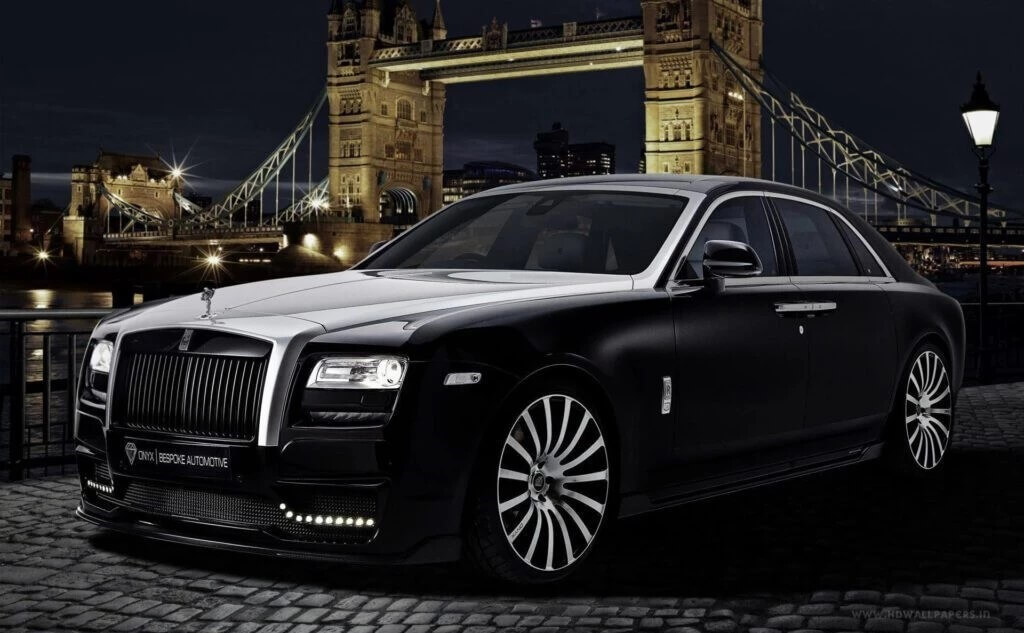
Rolls Royce Case Study
Introduction:
Rolls Royce is a prestigious British carmaker renowned for crafting top-quality automobiles with a global reputation for excellence. It operates under Rolls-Royce Holdings plc, a British multinational company specialising in aerospace and defence, established in February 2011.
In this blog post, we’ll delve into Rolls Royce’s marketing strategy, exploring its marketing approach, competitor analysis, and promotional campaigns. However, before diving into these aspects, let’s take a brief overview of the company.
About Rolls Royce
Rolls-Royce, formerly known as Rolls-Royce plc, specialises in producing propulsion engines for both civilian and military purposes, as well as power systems for various industries such as oil and gas, marine, and defence. Initially established by Charles Rolls and Henry Royce with a focus on car manufacturing, the company shifted its focus to Aero-engines during World War I in 1914, as mandated by the government.
While Rolls-Royce continued to manufacture cars from 1906 to 1973, its primary emphasis has since been on expanding its aerospace division. Today, Rolls-Royce is involved in building engines for civilian and military aircraft, providing power systems for land and naval military vehicles including submarines, and offering power solutions for the oil and gas industry and marine activities. In essence, Rolls-Royce is dedicated to developing advanced solutions to meet the global demand for power.
Since its demerger from the core company in 1973, Rolls-Royce’s automotive sector has undergone several changes in ownership. Presently, Rolls-Royce cars are exclusively manufactured by Rolls-Royce Motor Cars Limited, a subsidiary of BMW.
Rolls-Royce – Startup Story
The roots of Rolls-Royce can be traced back to 1884 when Henry Royce established a mechanical and electrical business in Manchester, initially focusing on dynamos and cranes. Recognizing the future potential of the automobile industry, Royce shifted his attention towards car manufacturing.
Meanwhile, Charles Rolls, after graduating from Cambridge, pursued various job opportunities but harboured a passion for marketing and automobiles. He began importing and selling cars to pursue his interests.
In 1904, Royce was developing his own car when he crossed paths with Rolls at an Automobile Club. Impressed by Royce’s design, Rolls agreed to sell all the cars Royce produced. Consequently, on December 23, 1904, at the Paris Motor Show, the Rolls-Royce brand was unveiled with their inaugural car, the Rolls-Royce 10 hp.
Initially established as a partnership in 1904, Rolls-Royce transitioned into a Private Limited Company in 1906 and later became a Public Listed Company in the following year. Following the death of Charles Rolls in 1910, Henry Royce and Claude Johnson assumed leadership roles within the company. Under their guidance, Rolls-Royce expanded its car models and ventured into manufacturing civil and defence aircraft engines by 1914, achieving remarkable success.
Rolls-Royce – Name and Logo
The name Rolls-Royce originates from the surnames of its founders, Charles Rolls and Henry Royce. The brand always uses a hyphen between the names, highlighting the close partnership between the two.
The logo of Rolls-Royce plc features two intertwined ‘R’s against a blue background, with “Rolls” above and “Royce” below. Similarly, Rolls-Royce Motor Cars Ltd has a logo with a white background but retains the same design.
The iconic “Spirit of Ecstasy” emblem, beloved by many, depicts a woman leaning forward with her arms outstretched behind her. Her flowing garments resemble wings, giving her the appearance of flight. Designed by Charles Robinson Sykes, the Spirit of Ecstasy is also known as Eleanor or the Flying Lady.
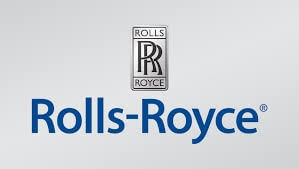
What’s new with Rolls Royce
Check out some current news about Rolls Royce:
- The company recently announced that its newly developed gas turbine has successfully powered a hybrid-electric flight.
- Rolls-Royce has introduced its latest masterpiece, the La Rose Noire Droptail.
- Rolls-Royce among six firms shortlisted for British small nuclear plants.
Target Audience of Rolls Royce
The target customers for Rolls-Royce are wealthy people who appreciate luxury, elegance, and excellent quality. This includes rich individuals from different age groups, such as successful professionals, business owners, and established leaders.
Rolls Royce Marketing Strategy & Marketing Mix (4Ps)
The Rolls Royce Marketing Strategy examines the brand using the marketing mix model, which encompasses the 4Ps: Product, Price, Place, and Promotion. These strategies, derived from the Rolls Royce marketing mix, play a crucial role in the brand’s success in the market. Let’s delve into the Rolls Royce Marketing Strategy & Mix to explore its product offerings, pricing strategies, advertising tactics, and distribution methods.
Rolls Royce Product Strategy:
In the Rolls Royce marketing strategy, the product strategy and mix can be outlined as follows:
Rolls Royce, a prestigious luxury car manufacturer headquartered in England, is renowned worldwide. It caters exclusively to affluent clientele seeking top-tier luxury vehicles. Rolls Royce offers a distinguished lineup of models including Phantom, Dawn, Ghost, and Wraith in its product portfolio as part of its marketing mix. As a subsidiary of the German automotive giant BMW, Rolls Royce Motors specialises in crafting bespoke automobiles tailored to individual customer preferences. It’s important to note that Rolls Royce Motors operates independently from the Rolls Royce brand, which belongs to a separate conglomerate with the same name.
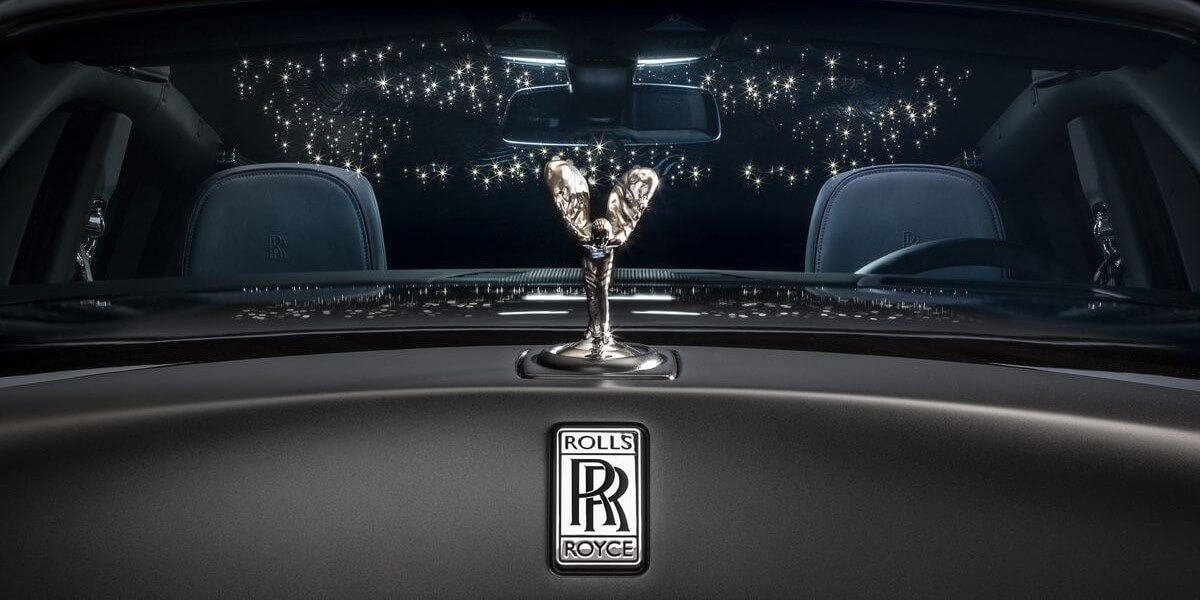
Rolls Royce cars are distinguished by their iconic features, including elongated front bonnets, metallic exteriors, and bespoke interiors tailored to individual preferences. Some models also offer coupe or convertible variants. These vehicles epitomise luxury in the automotive industry. Given its exclusive focus on the premium segment, Rolls Royce achieves relatively modest global annual sales of around 3,500 to 4,500 cars. The brand consistently invests in developing concept cars, demonstrating its commitment to innovation and anticipating future trends.
Rolls Royce Price/Pricing Strategy:
The pricing strategy employed by Rolls Royce in its marketing strategy is as follows:
Rolls Royce motor cars are positioned as premium products targeted exclusively at ultra-wealthy clientele. Pricing within its marketing mix is set at a premium level to reflect the superior quality of products, services, and craftsmanship offered by the brand. Additionally, Rolls Royce provides customization options to meet the specific requirements of each customer, further justifying the high price point.
Rolls Royce provides vehicles with starting prices ranging from $200,000 to $250,000, representing the entry-level range for their cars. However, these prices are subject to increase based on customizations, additional features, and interior options tailored to each customer’s preferences. The most expensive Rolls Royce car to date was the Hyperion Pininfarina, priced at $6 million per vehicle. This demonstrates that the brand remains unaffected by competitor pricing, prioritising top-notch quality and a premium pricing strategy. With an annual revenue exceeding $15 billion worldwide, Rolls Royce maintains its position as a leader in the luxury automobile market.
Rolls Royce Place & Distribution Strategy:
The distribution strategy employed by Rolls Royce in its marketing mix is as follows:
Rolls Royce boasts a significant global presence, with offices established in 50 countries worldwide. Its clientele spans over 150 countries, including major markets such as the US, UK, India, the Middle East, Australia, and China. While headquartered in England, Rolls Royce houses its administrative and production facilities to cater to customer needs effectively. Given its limited client base, Rolls Royce has meticulously developed a robust distribution network for its cars. Since Rolls Royce vehicles are customised to meet individual preferences, the company provides spare parts and servicing directly to customers’ doorsteps. This approach reflects Rolls Royce’s niche market strategy in terms of place and distribution of cars and spare parts.
Rolls Royce Promotion & Advertising Strategy:
In the Rolls Royce marketing strategy, the promotional and advertising approach is as follows:
Rolls Royce, with its illustrious heritage and iconic status, stands as an aspirational brand. Given its niche clientele, Rolls Royce doesn’t rely on conventional mass advertising methods such as television, print, or online ads. Instead, the brand leverages its exclusivity and appeal to elite individuals who seek luxury and social status symbols. Rolls Royce gains significant exposure through word of mouth, as well as its association with affluent celebrities, successful businessmen, and other influential figures. This serves as the most effective form of marketing and brand awareness for the company. Moreover, Rolls Royce engages its customers through exclusive merchandise, lavish gifts, and special events to maintain their interest and loyalty. Regular coverage in newspapers, television shows, and other media platforms further reinforces the brand’s prominence and dominance in the luxury car market. This highlights the unique promotional strategy employed by Rolls Royce in its marketing mix.
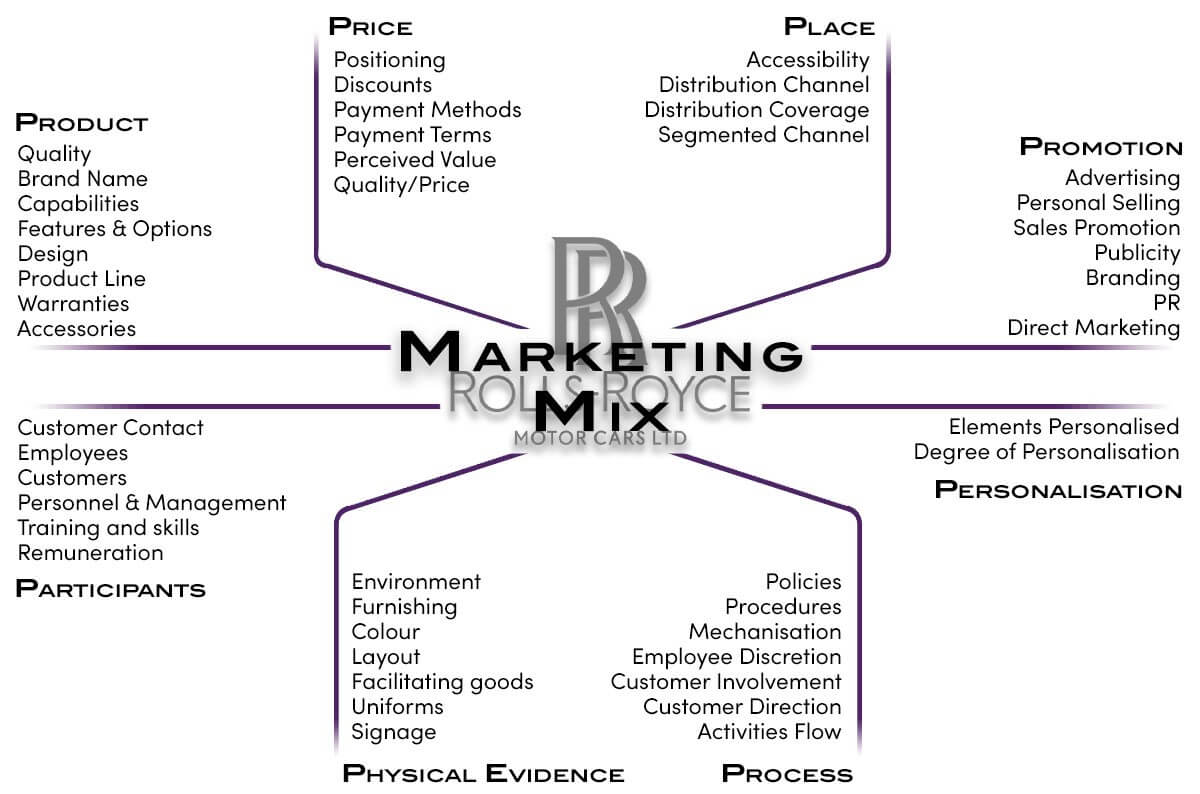
Business and Revenue Model
Rolls-Royce’s business model centres on cost reduction within its power systems division. This strategic focus allows them to allocate resources towards innovation and R&D efforts aligned with their overall mission and vision. Their primary source of revenue comes from the sale of engines and power systems to a wide range of industries. Additionally, they earn income through service contracts from airlines for the maintenance of aircraft engines.
Rolls-Royce Motor Cars Ltd specialises in the production and sale of premium luxury automobiles featuring top-tier quality and customizable features. Their vehicle lineup ranges in price from ₹5 crores to ₹10 crores, with the Rolls-Royce Phantom commanding the highest price. Recently, Rolls-Royce introduced the ‘Boat Tail’ model catering to their most exclusive clientele, priced at an impressive ₹202 crores.
Rolls-Royce – Challenges Faced
In 1971, Rolls-Royce faced bankruptcy due to mismanagement, primarily stemming from significant losses incurred from a fixed-price contract to manufacture airline engines for Lockheed Aircraft Corporation. The terms of this contract led to unsustainable losses, ultimately leading to the company’s financial collapse. The repercussions of Rolls-Royce’s bankruptcy were felt across various industries, prompting government intervention, and the company was nationalised to prevent further damage. Government ownership persisted until 1987 when Rolls-Royce reverted to being a private limited company.
Another significant challenge arose during the Covid-19 pandemic when Rolls-Royce experienced a substantial impact on its operations. With 50% of its revenue derived from aerospace activities, the complete halt in air travel during the crisis severely affected the company’s earnings. In 2020, Rolls-Royce reported its largest-ever loss of approximately £4 billion, marking a significant setback in its history.
Rolls-Royce – Funding and Investors
Rolls-Royce has gathered approximately $266 million across two funding rounds. Their most recent funding came from the Post-IPO Equity round, aimed at advancing the development of Small Modular Reactors (SMRs).
DATE | ROUND | AMOUNT | INVESTOR NAME |
November 9, 2021 | Post-IPO Equity | £195 Million | BNF Resources, Exelon Generation Company |
January 21, 2021 | Convertible Note | $1 Million | United States Navy |
Rolls-Royce – Mergers and Acquisitions
Rolls-Royce Motors split from Rolls-Royce (1971) Ltd. in 1973 and functioned independently alongside Bentley Motors until 1980. At that point, Vickers plc took over the ownership of the car business. Subsequently, in 1998, Vickers sold Rolls-Royce Motors to Volkswagen Group, but BMW secured the rights to the brand name “Rolls-Royce” and its emblem for £40 Million. Since 2003, BMW has held exclusive rights to manufacture, market, and sell Rolls-Royce cars.
Rolls-Royce plc became a subsidiary of Rolls-Royce Holdings plc after the latter’s establishment in 2011, although Rolls-Royce plc remains responsible for the majority of key operations. Below are some notable acquisitions and subsidiaries of Rolls-Royce Holdings plc: [Then list the acquisitions and subsidiaries.
NAME OF THE COMPANY | YEAR OF ACQUISITION/INCORPORATION |
January 14, 2020 | QINOUS |
March 30, 2015 | R.O.V. Technologies |
2014 | Rolls-Royce Controls and Data Services |
2014 | Rolls-Royce Power Systems |
July 2, 2013 | SmartMotor |
May 1, 2013 | Hyper-Therm High-Temperature Composites |
January 8, 2013 | PKMJ Technical Services |
May 23, 2011 | Rolls- Royce plc |
September 2, 2011 | R. Brooks Associates |
January 28, 2010 | Europea Microfusioni Aerospaziali |
January 6, 2010 | ODIM |
July 8, 2008 | Scandinavian Electric Holding |
1995 | Rolls-Royce North America (earlier Allison Engine Company) |
1998 | Rolls-Royce AB (as a part of Vickers acquisition) |
1999 | Rolls-Royce Marine Power Operations |
1998 | Vinters Limited (as a part of Vickers acquisition) |
Rolls-Royce – Competitors
Despite Rolls-Royce Holdings plc’s strong brand presence, it faces formidable competition in the market. Here are a couple of key competitors:
- General Electric (GE): GE, along with its partners, dominates the aero-engine market with a commanding 55% market share, holding the top position. Beyond aerospace, GE is engaged in diverse high-tech industrial sectors such as power systems, aviation, renewable energy, and digital industries.
- Pratt & Whitney: Another significant rival to Rolls-Royce in the aero-engine market, Pratt & Whitney also competes with Rolls-Royce in manufacturing power turbines for marine and various industrial applications.
In the automotive sector, some of the top competitors for Rolls-Royce Motor Cars Ltd. include:
- i) Mercedes-Benz: Renowned for luxury and efficiency, Mercedes-Benz manufactures sophisticated vehicles incorporating cutting-edge technology and a legacy of innovation, setting high standards for quality in the automotive sector.
- ii) BMW: Symbolizing outstanding engineering and driving pleasure, BMW offers unparalleled driving experiences by blending robust performance with dynamic design in their vehicles.
iii) Bentley: Exemplifying luxury and craftsmanship, Bentley represents the pinnacle of automotive artistry. Each handcrafted car embodies British engineering excellence, marrying timeless elegance with formidable power for the most discerning clientele.
- iv) Aston Martin: Intrinsically linked with the allure of James Bond and classic design, Aston Martin epitomises elegance and personality. Their automobiles exude sophistication while delivering exhilarating performance and unmatched style on the road.
- v) Ferrari: Symbolising the essence of Italian automotive passion, Ferrari is renowned for its iconic red cars, which fuse power, precision, and beauty to provide drivers with an exhilarating driving experience.
Rolls Royce SWOT Analysis
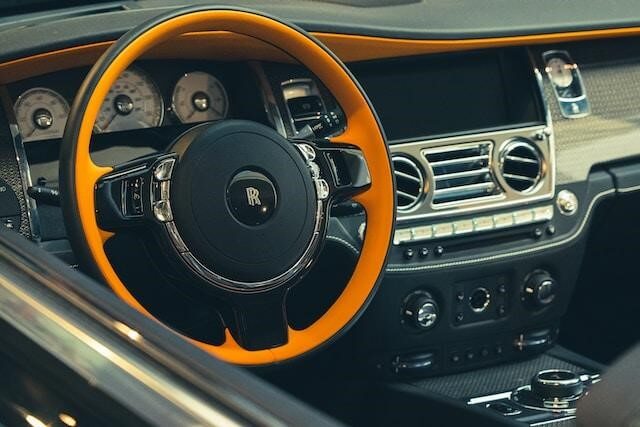
Strengths
Brand Reputation and Heritage : Rolls-Royce is well-known for its top-quality, innovative, and reliable products. With a history going back to 1906, the company has earned a strong reputation in engineering and manufacturing. This reputation helps attract customers and build trust.
Technological Innovation: Rolls-Royce is always investing in research and development to create the latest products and solutions. This focus on innovation keeps Rolls-Royce ahead of the competition and lets them adapt to what customers need in different industries.
Diversified Product Portfolio: Rolls-Royce offers a wide range of products and services in aerospace, defense, marine, and energy sectors. This variety means they’re not dependent on just one market, which lowers their risk if one market goes down.
Global Presence: Rolls-Royce operates in over 150 countries, serving customers worldwide. Being everywhere means they can take advantage of opportunities in new markets.
Long-term Customer Relationships: Rolls-Royce has strong ties with major customers like governments and airlines. These relationships often involve long contracts, giving Rolls-Royce steady income.
Aftermarket Services: Rolls-Royce provides support after selling its products, like maintenance and repairs. These services bring in regular income and keep customers happy.
Skilled Workforce: Rolls-Royce hires highly skilled workers with expertise in engineering, design, and manufacturing. They invest in training to keep their employees at the top of their game.
Commitment to Sustainability: Rolls-Royce is focused on making environmentally friendly technologies, like electric and hybrid propulsion systems. This helps their image and opens up new markets.
Weaknesses
Dependence on Aerospace Industry: Rolls-Royce makes a lot of its money from selling stuff to the aerospace industry. But because they rely so much on it, when something bad happens in that industry, like during COVID-19 when fewer planes were flying, it hurts Rolls-Royce’s business too.
High R&D Costs: Rolls-Royce spends a ton of money on coming up with new ideas and making cool new stuff. But because it costs so much, sometimes they don’t make as much money as they’d like, and it’s hard for them to spend on other things.
Manufacturing and Supply Chain Complexity: Making Rolls-Royce’s stuff, especially for planes and defense, is really complicated. Sometimes things go wrong in making or getting the parts, which can slow things down, mess up the quality, or make stuff cost more.
Competition: Other big companies like General Electric and Pratt & Whitney also make similar stuff and are always trying to be better. This makes Rolls-Royce work really hard to stay ahead and keep their customers.
Cost Overruns and Delays: Sometimes Rolls-Royce spends more money or takes longer than expected to make new stuff, like the engines for Boeing planes. This can make people not trust them as much and lose business to other companies.
Regulatory Compliance and Geopolitical Risks: Rolls-Royce has to follow a lot of rules, and if those change, it can mess up their plans. Also, problems between countries can make it hard for them to do business.
Workforce Reductions: When business isn’t good, Rolls-Royce sometimes has to let people go to save money. But this can make the people who stay feel unhappy, and they might leave too.
Environmental Concerns: Making stuff like engines makes pollution, which is bad for the environment. People are starting to care more about this, so Rolls-Royce has to figure out how to make things cleaner, but it’s hard and costs a lot of money.
Opportunities
Sustainable Technologies: With more people worried about climate change and how planes and boats affect the environment, there’s a big need for cleaner and greener technologies. Rolls-Royce can work on making electric and hybrid engines and other clean energy solutions to meet this demand and be better than other companies.
Expansion in Emerging Markets: Rolls-Royce can go into new places like Asia-Pacific, Latin America, and Africa where there’s more demand for planes, defence stuff, and power systems. This would help them make money from different places and not just rely on the same old markets.
Aftermarket Services: Rolls-Royce can make its services after selling stuff even better. They can do more maintenance, repairs, and upgrades, and even use fancy tech to predict when things might break. This would make customers happier and keep them coming back.
Strategic Partnerships and Collaborations: Rolls-Royce can team up with other companies, schools, and governments to make new stuff together and share the costs. This would help them be better than others and make sure they’re giving customers what they want.
Diversification: Rolls-Royce can try new things like renewable energy or exploring space to make money in different ways. This would help them not rely too much on just making plane stuff and be ready for new opportunities.
Digital Transformation and Industry 4.0: Rolls-Royce can use fancy new tech like AI and robots to make their factories and stuff work better. This would help them save money and make things faster, so they can keep up with what customers want.
Customization and Personalization: Rolls-Royce can make stuff that’s more special and exactly what each customer wants. This would make customers really happy and make Rolls-Royce different from other companies.
Talent Development: Rolls-Royce can keep teaching their workers new things so they can keep making cool stuff and be better than other companies. This would also help them get and keep the best workers.
Threats
Economic and Industry Downturns: When the economy or the aerospace industry isn’t doing well, it affects how Rolls-Royce performs. Things like recessions, global tensions, or events like COVID-19 can lower the demand for their products and services, which hurts their profits.
Intense Competition: Rolls-Royce has to compete with big companies like General Electric, Pratt & Whitney, and Siemens, as well as newer competitors. This tough competition means they have to keep their prices low, work hard to keep their customers, and always come up with new ideas to stay ahead.
Technological Disruption: New technology is always coming out, and sometimes it can make Rolls-Royce’s stuff outdated. To keep up, they have to keep investing in research and development to make sure they’re always ahead of the game.
Regulatory Compliance and Environmental Concerns: Rolls-Royce has to follow a lot of rules, and if those change, it can mess up their plans. Plus, people care more about the environment now, so Rolls-Royce has to think about making their stuff cleaner.
Geopolitical Risks and Trade Disputes: Problems between countries can make it hard for Rolls-Royce to do business. They have to watch what’s happening around the world and be ready to change their plans if they need to.
Cybersecurity Threats: Since Rolls-Royce is using more digital technology, they’re at risk of being attacked by hackers. This could cost them money, hurt their reputation, and even get them in trouble with the law.
Supply Chain Disruptions: Sometimes things go wrong with getting parts or making stuff, which can slow things down or cost more money. This can make customers unhappy and hurt Rolls-Royce’s reputation.
Currency Fluctuations: Because Rolls-Royce does business all over the world, changes in currency values can affect how much money they make. They have to be smart about managing these risks to avoid losing money.
Attracting and Retaining Talent: Finding and keeping smart people to work for Rolls-Royce is really important. If they can’t get or keep the best workers, they won’t be able to come up with new ideas or make cool stuff.
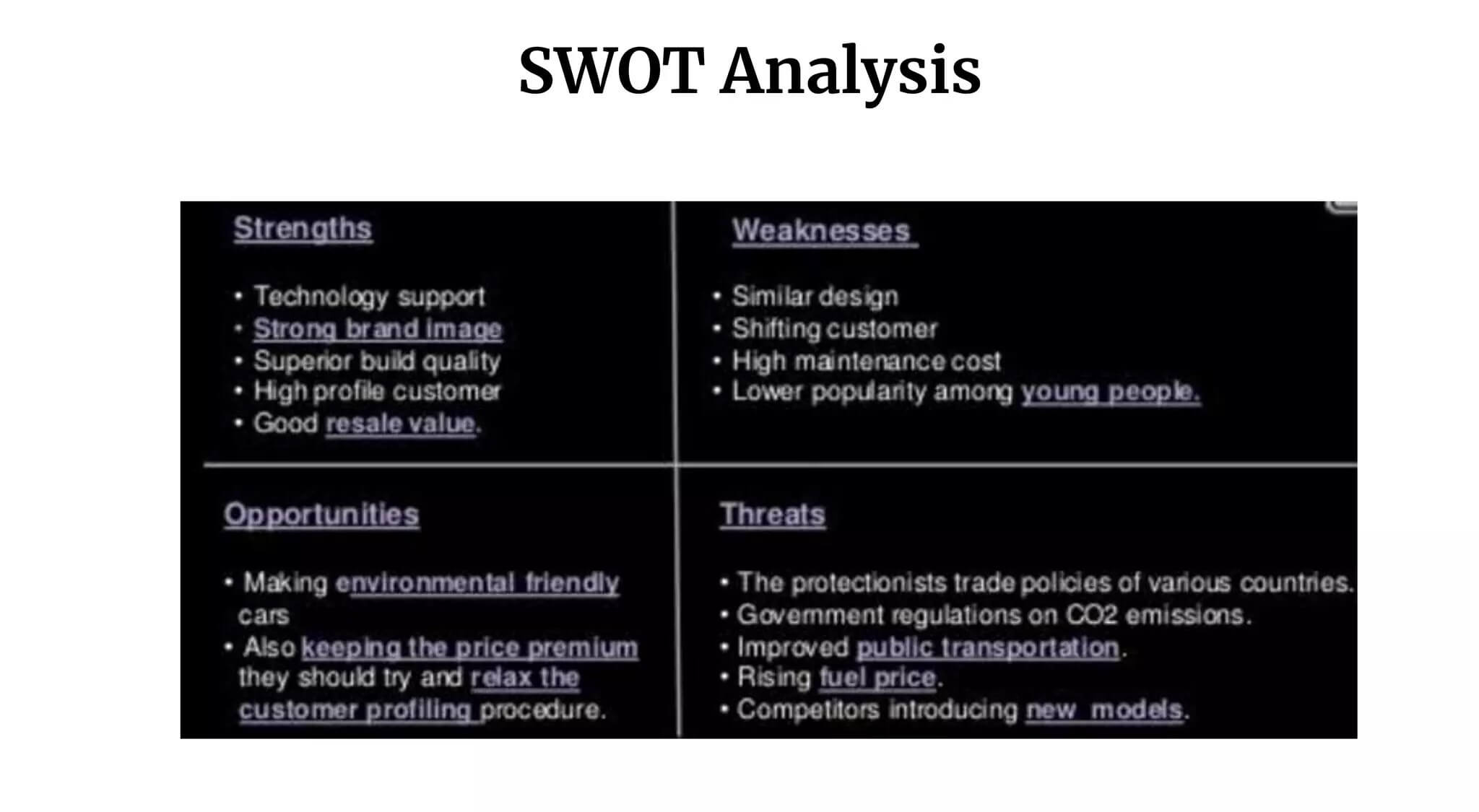
Rolls-Royce – Future Plans
Rolls-Royce is pouring significant resources into developing technologies to efficiently address the world’s power requirements. Their groundbreaking innovations not only cut costs for customers but also safeguard the environment.
Electric Aircraft – Rolls-Royce is on a mission to electrify the aviation industry. They recently unveiled their first all-electric plane, which took its inaugural flight on September 18, 2021. Plans are underway to enhance this aircraft’s capabilities to reach speeds of up to 300 mph. In response to climate change, Rolls-Royce is actively working on creating zero-emission aircraft for future use.
Small Modular Reactors (SMR) – Rolls-Royce SMR Ltd has been established with the goal of constructing power plants that utilise SMR technology to generate electricity, meeting the UK’s future power demands. It is anticipated that this technology will be ready for deployment by 2030.
Space Exploration – Rolls-Royce is pioneering nuclear technologies aimed at developing power systems for space exploration missions.
Net Zero Carbon – Rolls-Royce has made achieving Net Zero Carbon emissions a central objective in both their current and future endeavours. They are striving to eliminate carbon emissions from their operations entirely by 2030.
Conclusion
To sum up, Rolls-Royce is all about pushing boundaries and doing top-notch work. Even when times get tough, they stay focused and keep moving forward. Their dedication to making things cleaner, like with electric planes and small modular reactors, proves they’re committed to a greener world. And with their aim to completely cut carbon emissions by 2030 and a track record of amazing accomplishments, Rolls-Royce is leading the way in shaping the future of aviation and more.
